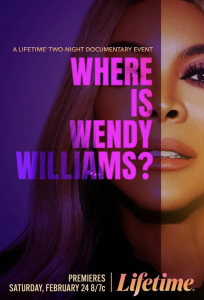9 Protecting and Trusting Sources
We’ll open this chapter with a hypothetical situation involving COVID-19. Note that we could substitute other maladies and scenarios for COVID, and the hypothetical framework would remain the same.
Study the following presentation slides by using the forward button or clicking on sections of the control bar.
In this extended chapter, we’ll study the ethical use of sources in media content. Two broad questions can help you think about the use of sources, such as those in the opening hypothetical.
1. When should sources be protected? In the opening hypothetical, grief-stricken sources will share fond memories about the deceased city health director. These sources, including family members, may perceive that you are insensitive and intrusive if you publish medical information about the health director.
Some readers might question why the vaccination status is relevant in a story about the entirety of a public servant’s life. By publishing vaccination details, you may appear to advocate for vaccinations and other COVID-19 safety protocols while lacking interest in minimizing harm.
And whether’s it’s fair or not, here’s how some readers would interpret the narrative in your story:
This man wasn’t smart enough to get vaccinated, and then he died of COVID.
2. Can sources be trusted? Do you have proof, obtained legally and ethically, of the health director’s vaccination status, or are you merely relying on sources who had casual conversations with him?
If you think your audience should know that local citizens are dying from COVID, partly because they decided not to be vaccinated, you must be certain that any reporting about the health director’s vaccination status is accurate and comes from more than one credible source.
Above all, you should report truthfully and ethically to avoid the following reader narrative after the story is published:
This reporter published fake news. In fact, the health director had changed his mind and got vaccinated more than a month before he died. The reporter just wanted attention and didn’t care about the pain that the obituary would cause for the health director’s wife and daughter.
A 2022 article from the Poynter Institute addressed some of the questions posed in the opening hypothetical regarding reporting on someone’s vaccination status.
In 2025, similar questions could have been asked about reporting on the vaccination status of people who contracted measles.
VULNERABLE SOURCES IN TIMES OF TRAUMA
News journalists want to report the emotional impact that people face in times of disasters, wars, tragedies and other traumatic events. But the interview subjects are often vulnerable, stressed and confused, so there are inherent risks when broadcast journalists use live, on-scene interviews in times of crisis.
Here’s a worst-case scenario involving a broadcast journalist interviewing a victim of trauma.
In fairness to the CNN reporter, the source consented to be interviewed in advance. After you watch the video, what are your thoughts? Should broadcast journalists be expected to anticipate moments like the one shown in the video?
Immediately after a high-impact event such as a mass shooting or a hurricane hitting a major city, audiences want up-to-date information and visuals. Such coverage can elicit empathy for victims and lead to charitable donations.
However, swarms of journalists covering the same traumatic event may lose sight of the need for compassion. Writing for the National Newspaper Association Foundation, Jackie Spinner provided this assessment:
The real problem is the chase. Our news organizations compete for exclusive interviews and to publish the most vivid and dramatic accounts first.
Writing for for The Journalist’s Resource, Naseem S. Miller said journalists should keep in mind that trauma survivors often have experienced an event that gave them no control over their own lives. Miller suggested that instead of relying entirely on scripted interview questions, reporters can ask these sources how they want to start an interview. She also provided this advice:
Journalists should take greater care when interviewing private citizens, especially those who are suffering in some way and the survivors of traumatic events, by practicing trauma-informed journalism, which is acknowledging the impact of trauma on people and how an interview can create additional stress for them, and less-extractive reporting, which is about ethical ways that journalists can interview people who have experienced harm or are in some way suffering.
Similarly, Natalie Yahr generated 12 rules for less-extractive reporting, published by the Center for Journalism Ethics at the University of Wisconsin-Madison. The first rule is to “make sure your source knows what to expect.”
MINORS AS VULNERABLE SOURCES
Media professionals generally attempt to minimize harm to minors who unintentionally become part of dramatic or traumatic stories, such as school shootings. When possible, news reporters should get consent from a parent or guardian before using a minor as a source.
Some flexibility is possible, though. For example, you may see news outlets interview high school students who are involved in athletics, service projects or charity drives. In those instances, there is minimal risk even if the parent or guardian has not given consent in advance.
For cases involving children’s mental health, though, the ethical landscape is tricky. In a first-person essay, journalist Abigail Kramer wrote about the balancing act of reporting on vulnerable kids while protecting their privacy. The essay focused on children who face serious mental health challenges.
Kramer noted that the standard policy is to “allow parents and guardians to decide how identifiable or anonymous their children will be.” However, this can lead to difficult questions about minimizing future harm for children whose parents have given consent. Kramer’s essay included the following concerns:
- How will their kids feel seeing personal information published online?
- Will their family be publicly defined by what we write?
- Will the story pop up in a Google search if a future college admissions counselor or employer looks up their child’s name?
And what about minors who appear in their parents’ social media posts? You can read the following case study from the Center for Media Engagement at the University of Texas at Austin:
• ‘Act like you’re crying’ – Media Ethics Initiative
The analysis noted critics’ concerns that “many of these channels have dysfunctional families behind the scenes.” In those cases, the ethical concerns may extend beyond the parents to the platforms (such as YouTube, TikTok or Instagram) that host the content, news journalists who report on the content, and advertising executives who profit from the content.
Similarly, a 2023 article in Teen Vogue magazine discussed “mom-influencers” and the potential “harm of oversharing children online” when a child is not capable of giving informed consent. The article noted that “the lack of labor laws for child influencers is an example of the law lagging behind the culture.”
 NOT SO HEAVENLY AFTER ALL
NOT SO HEAVENLY AFTER ALL
A stark example of a minor as a vulnerable source is the 2010 bestseller The Boy Who Came Back From Heaven. It told the story of a young boy who experienced brain trauma following a car accident when he was 6 years old. In the book, which was co-written by the boy’s father, the boy described an out-of-body experience along with visions of heaven, angels and the devil. Celebrated by many Christian evangelicals, the book sold over a million copies.
However, the boy’s mother was not supportive of the book’s content, and in 2015, the boy himself acknowledged that “I did not die. I did not go to Heaven. I said I went to heaven because I thought it would get me attention.” Here’s a brief summary from National Public Radio.
In 2015, Tyndale House publishing company acknowledged concerns with the book and ceased printing it. And if you want a deep dive into the financial matters, lawsuits, a movie version, and other nitty-gritty details, here’s a fascinating feature story:
VULNERABLE SOURCES IN DOCUMENTARY FILMS
In fall 2019, documentary filmmaker Brent Renaud was a visiting distinguished professor of ethics in journalism for the School of Journalism and Strategic Media. In the two audio clips below, Renaud discussed how he handles vulnerable sources in documentary filmmaking.
Renaud died in March 2022 while working in a suburb of Kyiv, covering the Russian invasion of Ukraine. His film and television projects covered wars in Iraq and Afghanistan, the earthquake in Haiti, youth violence in Chicago, political turmoil in Egypt and Libya, the fight for Mosul, extremism in Africa, and cartel violence in Mexico.
Vulnerable documentary sources – MINORS
Vulnerable documentary sources – ADULTS
WHERE IS WENDY WILLIAMS?
 In 2024, Lifetime aired a four-hour documentary about media personality and talk show host Wendy Williams. The producers said the project was initially intended as a “career comeback story.” Producer Mark Ford admitted, however, that they soon realized it would be “a deeper story, and that there was something ultimately disturbing going on in Wendy’s life.”
In 2024, Lifetime aired a four-hour documentary about media personality and talk show host Wendy Williams. The producers said the project was initially intended as a “career comeback story.” Producer Mark Ford admitted, however, that they soon realized it would be “a deeper story, and that there was something ultimately disturbing going on in Wendy’s life.”
As the filming unfolded, Williams showed signs of dementia, which doctors eventually diagnosed. The producers recognized that Williams was a vulnerable source, and they were conflicted about whether to continue production, even with her family’s approval. Ford provided this perspective:
There was a real emotional connection that the project gave her, and honestly, it got to a point where we were more worried about what would happen to Wendy if we stopped filming than if we continued.
You can read more about the documentary producers’ decision-making processes here:
• Wendy Williams Doc Producers: “If We’d Known She Had Dementia, No One Would’ve Rolled a Camera” – The Hollywood Reporter
And below is the trailer for the documentary.
ANONYMOUS SOURCES
News journalists occasionally use anonymous sources, but that should be limited to cases when the source is considered trustworthy, limited alternatives are available in reporting important information, and the anonymous source’s job security or physical safety might be in jeopardy. In simple terms, minimizing harm to the source takes precedent over full transparency in reporting.
The Associated Press provides succinct guidance on using anonymous sources. AP’s guidelines say that anonymous sources should only be used under the following circumstances:
1. The material is information and not opinion or speculation, and is vital to the report.
2. The information is not available except under the conditions of anonymity imposed by the source.
3. The source is reliable, and in a position to have direct knowledge of the information.
The New York Times has similar guidelines and follows a policy that “the reporter and at least one editor know the identity of the source.”
Also, keep in mind that most of these cases involve an anonymous source whose job security or physical safety is threatened. If all interview subjects are granted anonymity when they request it, our news content becomes much less credible.
Once a reporter and editor have agreed to grant anonymity to a source, they have made a promise not to reveal the source’s identity. Breaking that promise would be unethical.
 RELIABILITY OF SOURCES
RELIABILITY OF SOURCES
In the following audio, reporter and editor Steven Holmes discusses the reliability of sources, including anonymous sources.
Holmes was a member of a New York Times team that won a Pulitzer Prize in 2001 for coverage of race relations. He also taught at the University of Arkansas for a semester as a visiting distinguished professor of ethics for the School of Journalism and Strategic Media.
CALIPHATE – THE RISK OF TRUSTING SOURCES
The New York Times produced an award-winning podcast series titled “Caliphate,” about the radicalization of a young Canadian who said he became an executioner for ISIS. The podcast’s primary source was given a pseudonym.
The podcast garnered publicity and awards, but the premise was a lie. In the following audio, NPR explained why editors eventually retracted the core of “Caliphate.”
• ‘New York Times’ retracts core of hit podcast series ‘Caliphate’ On ISIS – NPR (audio with transcript)
We studied fabrication in a previous chapter. As part of our current lesson, a key takeaway in this case is that media professionals must verify that their sources are providing reliable information, not fabricated stories. In the the Caliphate podcast, journalists were heavily reliant on a single source and then perhaps became overly excited about the podcast’s popularity, and thus were willing to ignore many red flags. You can read some of the Times’ own coverage of the fallout:
• Canadian admits fabricating terrorism tale detailed in New York Times podcast – NY Times
(University of Arkansas students have free access to the NY Times by signing up via campus email credentials)
CHECKBOOK JOURNALISM
One additional ethical concern, checkbook journalism, should be mentioned before this lessons ends.
As an extreme example, in 1994, multiple media outlets reported that the National Enquirer had offered Al Cowlings, a friend of NFL Hall of Famer O.J. Simpson, $1 million for an interview. In checkbook journalism, sources are paid money or other incentives, such as trips or free products, for their stories.
Any paid-for interviews should come with a full disclosure for terms of the interview agreement, and the disclosure can lead to audience skepticism. How credible is information from the interview when the source has been paid? Is the source embellishing information with juicier details to get more money?
The Society of Professional Journalists offers a more detailed ethical analysis:
• Checkbook Journalism – SPJ
In short, it’s almost always a bad idea to pay sources for information.
CLOSING REVIEW
WRITE ABOUT IT
Using your own words and ideas along with support from the lesson, answer these questions in approximately three to five sentences per response.
1. In what situations does a journalist need to take extra precautions with using minors as sources? Is it ever appropriate to use minors as sources without parental consent?
2. In what situations is it ethically appropriate for reporters to use anonymous sources?
3. Outside of anonymous sources, in what situations should a journalist take extra precautions with adult sources who may be vulnerable?
4a. What mistakes in reporting and editing stand out most in the case of the “Caliphate” podcast? How did the desire to produce a hit podcast conflict with journalistic sensibilities?
OR
4b. What mistakes in oversight stand out most in the case of The Boy Who Came Back From Heaven? Beyond family matters, how did the desire for a bestselling book conflict with journalistic sensibilities, especially for the book publisher?
5. What are the ethical concerns with paying news sources for information and interviews?


